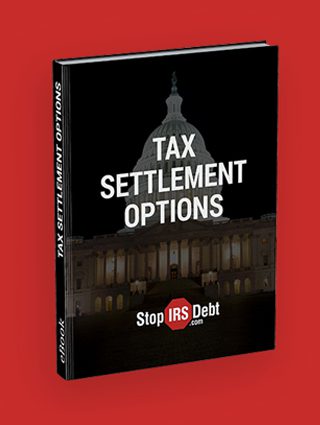- browse by category
- Audit Assistance
- Business and Taxes
- Celebrities in Tax Debt
- Cryptocurrency Taxes
- Economic News
- Foreign Banking
- Innocent Spouse
- IRS debt settlement
- IRS Headlines
- IRS Wage Garnishment
- Marriage & Divorce
- Payroll Tax
- Retirement
- Revenue Officers
- State Tax Headlines
- Stop IRS Debt
- Success Stories
- Tax and Politics
- Tax Attorney
- Tax Codes
- Tax Debt Help
- Tax Evasion
- Tax Levy
- Tax Lien
- Tax Payment Plans
- Tax Return Filing
- Tax Tips

As the economy continues to sputter and stumble amidst a global health crisis, sadly the results have impacted everyday, hard working people most of all. While some major companies have been hit hard, certainly nobody has been hit harder than middle and lower class workers and small business owners. And coronavirus-related layoffs or and closures are just one side of the coin. On the other side of the coin, a rocky stock market stretches beyond the wallet and into retirement savings. So, we wanted to take a moment to explain how the legislation passed earlier in 2020, the CARES Act, plays into all this.
The Cares Act offered a lot more than economic stimulus payments, expanded unemployment insurance, and PPP loans. It also impacted what you can do with your retirement savings—and when.
However, what the Cares Act says about taxes certainly won’t solve problems for everyone. As we’ve seen with some of the tax-related legislation and executive actions this year, you need to look out for the drawbacks before trying to take advantage.
With all that said, the only way to make that decision requires having enough of the right info on hand. So that’s what we’re here to do. We’ll walk you through what the CARES Act says about your retirement savings and all the considerations you should make about it.
What does the Cares Act say about retirement accounts?
In the CARES (Coronavirus Aid, Relief, and Security) Act, there are actually a number of provisions that impact retirement accounts. Of course, in the midst of the economic shutdown, layoffs, and general economic and health anxiety, they kind of slipped through the cracks of discourse. But they were certainly there!
Withdrawals
Typically, for savers younger than 59.5 years old, withdrawing money from your retirement savings comes with a cost. Though your normal “of age” withdrawals will be subjected to income taxes, under a certain age, a 10 percent penalty will also fall onto the withdrawal. This applies to your IRAs and other contribution plans, like a 401(k) or a 403(b).
The CARES Act waives this additional penalty if you experience financial hardship due to the coronavirus. So what does that mean, exactly?
Coronavirus-Based Financial Hardships
Here’s a relatively comprehensive list of situations that might qualify you to take penalty-free withdrawals from your retirement savings.
- You, a spouse, or a dependent have contracted COVID.
- You’ve experienced a layoff, a furlough, or a reduction of hours related to the pandemic.
- You can’t work because you can’t secure child care.
- As a business owner, you’ve had to close your business or reduce hours.
In any of these truly unfortunate circumstances, you likely qualify for the 10 percent penalty waiver.
Note: You can only make this penalty-free withdrawal from your retirement accounts through Dec. 31, 2020.
Paying Taxes on Your Withdrawal
Although the Cares Act grants you some leeway to avoid the 10 percent early withdrawal penalty, it doesn’t wipe out your tax obligation. Income tax will still apply to your withdrawal, which is something you should prepare yourself for. Fortunately, the legislation offers you some additional flexibility with when you pay that income tax.
Fortunately, you don’t need to pay taxes on the distribution right away—or possibly at all! You have three years to repay the money you’ve withdrawn so you don’t need to pay taxes on it in the first place. And if you do choose to repay that money in a year or two, you’ll get an added benefit. That money you repay will not count toward the annual contribution limits to your retirement plans. So if even if you usually hit the maximum 401(k) contribution of $19,500, you can go over that total if you’re repaying a withdrawal.
If you do not repay the total distribution within three years, you’ll have to pay taxes. But the standard income tax will apply.
Taking Loans from Retirement Savings via the Cares Act
Though the process for taking a tax-free withdrawal on your retirement may sound a lot like a loan, it isn’t one. Technically, the Cares Act lays out some specifics for borrowing against your retirement savings through employer-sponsored retirement plans.
- If your employer allows this type of loan, the Cares Act doubled the loan limit. Now, you can borrow up to $100,000, up from $50,000. However, the provision doesn’t require employers to increase the limit, and yours may opt not to do so.
- You may borrow up to 100 percent of your vested amount. Previously, a rule limited that total to only 50 percent of the balance—or $50,000, like in provision one. So if you have $60,000 in your 401(k), you can now borrow up to $60,000 instead of $30,000.
Provisions for Previous Retirement Savings Loans
If you already took out a loan from your retirement accounts, you may have been making payments when the Cares Act was passed. If that’s the case, the legislation gives you some leeway in terms of repayment. You can defer loan payments between March 27 and December 31 up to one year. Although interest will continue accruing on your loan, the loan term will also extend for as long as you deferred payments.
Weighing Your Options
The Cares Act provides a ton of economic relief measures of all sorts, but when it comes to your retirement savings—is it worth it? We can’t say. Ultimately, this comes down to you making a financial decision for yourself and your family. And we don’t know the fundamentals of your finances (though we always recommend talking to a good financial advisor, if you can).
Ultimately, we’re skeptical of the usefulness of some of these provisions in the long-term. In a pinch, they may help you out of a financial bind! But because almost all these options require repayment and still subject your retirement savings or loan interest, they just delay when the financial strain will fall. And unfortunately right now, that may not be music to your ears.
Millions of Americans are struggling right now through layoffs, furloughs, business closures, and healthcare. And while the Cares Act offered options to alleviate some of the strain, it can’t totally eliminate it. But still, the path forward includes looking at our options and finding the one with the most upside and least downside. And the Cares Act may offer a bridge to 2021 and beyond.
If you have any questions about coronavirus-related economic relief or your tax situation, we’re only a call away. Or, get in touch with us through our live chat today.
Leave Comments

Top Tax
secrets revealed
Sign up for our newsletter and be the first to find out when exciting IRS news happens. Yes, exciting. We're really into taxes.


